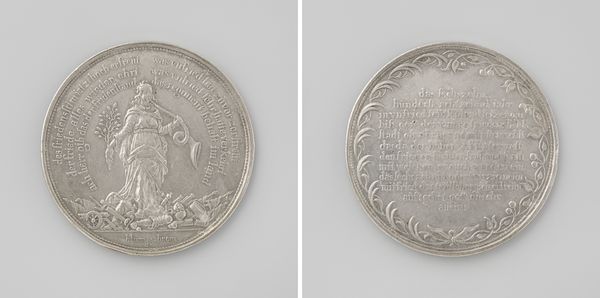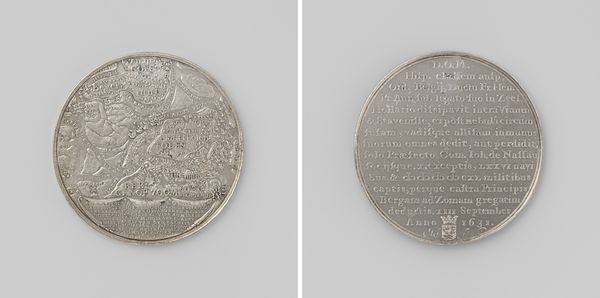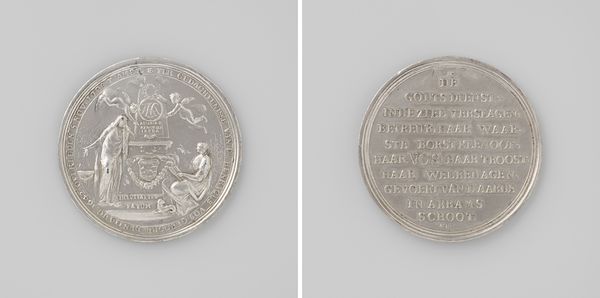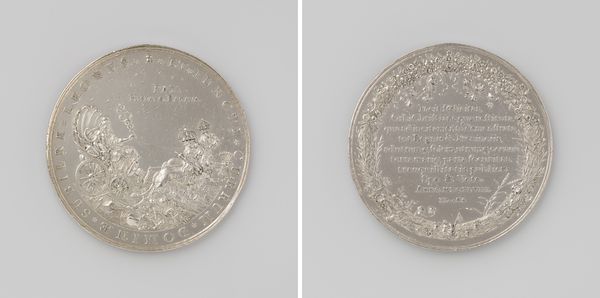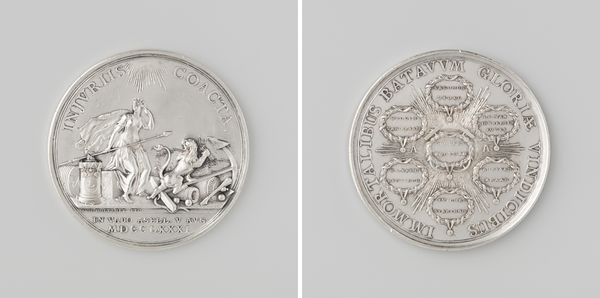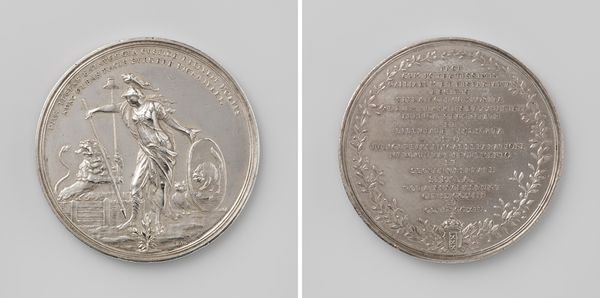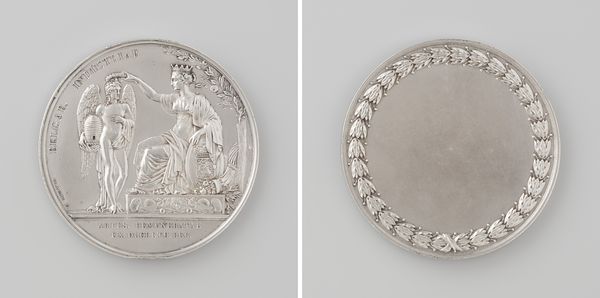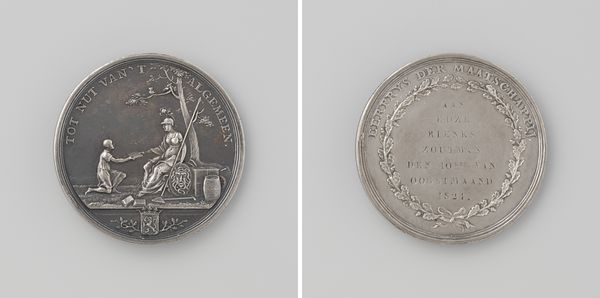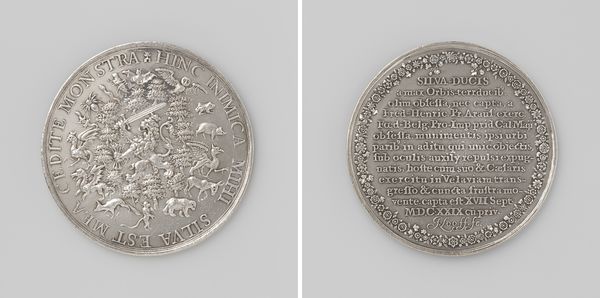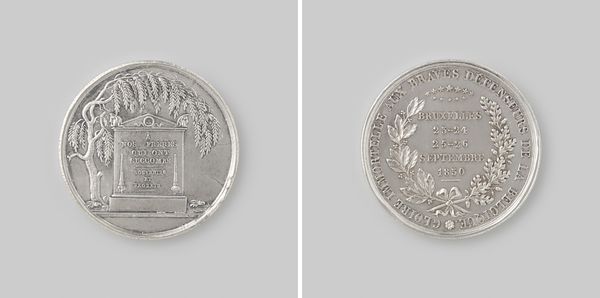
Huwelijk van Albrecht Friedrich Heinrich, prins van Pruisen met Louisa Marianne, prinses der Nederlanden te 's-Gravenhage 1830
0:00
0:00
print, metal, sculpture
#
portrait
#
neoclacissism
# print
#
metal
#
sculpture
Dimensions: diameter 4.6 cm, weight 36.24 gr
Copyright: Rijks Museum: Open Domain
Curator: Welcome to the Rijksmuseum. We’re standing before a medal by David van der Kellen, created in 1830. It commemorates the marriage of Albrecht Friedrich Heinrich, Prince of Prussia, to Louisa Marianne, Princess of the Netherlands. Editor: It strikes me immediately as impeccably formal and celebratory. There’s an almost chilling neoclassical precision to it. Are these objects like miniature political statements cast in metal? Curator: Precisely. Van der Kellen has rendered the medal in stunning detail. Observe the figure of the winged Cupid, nude and youthful, suspended in mid-air, bearing celebratory wreaths. It's meticulously executed, and the use of metal emphasizes its enduring nature. Editor: The naked form is an obvious callback to Greek and Roman sculpture, isn’t it? This sort of idealization always makes me a little uneasy. Whose ideals are being upheld here, and who is excluded from such a seemingly celebratory occasion? And cupid with what exactly, love perhaps by royal arranged marriage and social power? Curator: An excellent point. It is critical to question those traditions, but if we shift our focus momentarily, note the rose wreath around the inscription on the reverse. This wreath frames the announcement of the event, an explicit celebration of the union, but also the stability and political alliance such marriages often forged. It’s all very composed and tightly controlled. Editor: So we have this controlled display on a silver platter, with each carefully selected element meant to broadcast legitimacy. In the historical context of European royalty, this is understandable, and it reveals a carefully crafted image, and highlights that everything, even love, can be subject to political design. Curator: Yes, though viewing it from our perspective allows for a crucial critical perspective on those systems of power. By acknowledging the historical significance of such symbols and scrutinizing the intentions behind them, we begin to unravel layers of history embedded in metal. Editor: I find these insights enriching – acknowledging art’s entanglement within broader historical and social power struggles encourages critical thought. Curator: I agree. Examining the craftsmanship coupled with an acknowledgment of the political conditions that give rise to such an object expands its meaning.
Comments
No comments
Be the first to comment and join the conversation on the ultimate creative platform.
